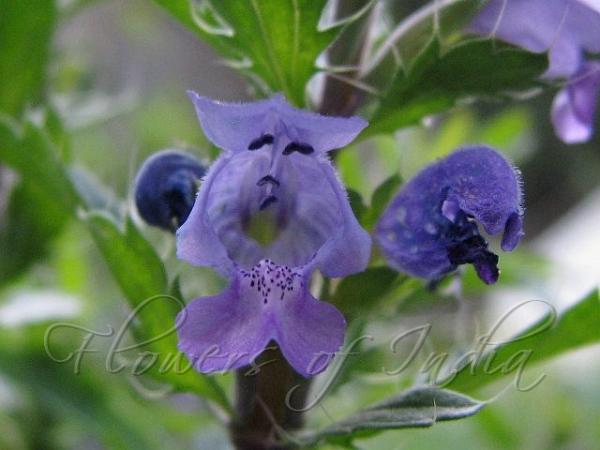|
| Moldavian Dragonhead |
|

|

| File size | 51607 |
| Original date | 9/18/11 4:38 PM |
| Resolution | 640 x 480 |
| Flash | Flash did not fire, auto |
| Focal length | 6.0mm |
| Exposure time | 1/250s |
| Aperture | 2.7 |
| Focus Distance | |
| Metering Mode | Center weighted average |
| Camera make | Canon |
| Camera model | Canon PowerShot S5 IS |
| Sensor type | OneChipColorArea |
|
|
|
|
Photo: |
Botanical name: Dracocephalum moldavica Family: Lamiaceae (Mint family)
Moldavian Dragonhead is an annual, aromatic herb,
with erect stems 15-30 cm tall, usually branched from near the base.
Stems are bristly with short retrorse eglandular hairs. Leaves are
about 1.2-2.5 cm long, 0.7-1.5 cm wide, oblong-ovate, toothed, base
wedge-shaped to flat. Both surfaces have short eglandular indumentum,
and sessile oil globules below. Flowers are borne in distant 6-flowered
whorls. Bracts are oblong, with long awns. Flower-stalks are 2-5 mm,
flattened. Sepal tube is 0.8-1 cm, two-lipped with prominent
‘folds’ at the sinuses. They are densely covered with very short
eglandular hairs and scattered stalkless oil globules. Upper lip has 3
ovate nearly equal pointed teeth. Lower lip has 2 lanceshaped pointed
teeth. Flowers are about 2 cm long, bright blue violet, externally
hairy. Nutlets are 2.5 x 1.2 mm oblong, trigonous, brown, apically
truncate, with a prominent V-shaped attachment scar. Moldavian
Dragonhead is native to temperate Asia, including Western Himalaya,
widely naturalized in Europe. It is cultivated in India for its essential oils.
Flowering: July-September.
| Identification credit: Giby Kuriakose | Photographed at Turtuk Village, Ladakh. |
• Is this flower misidentified? If yes,